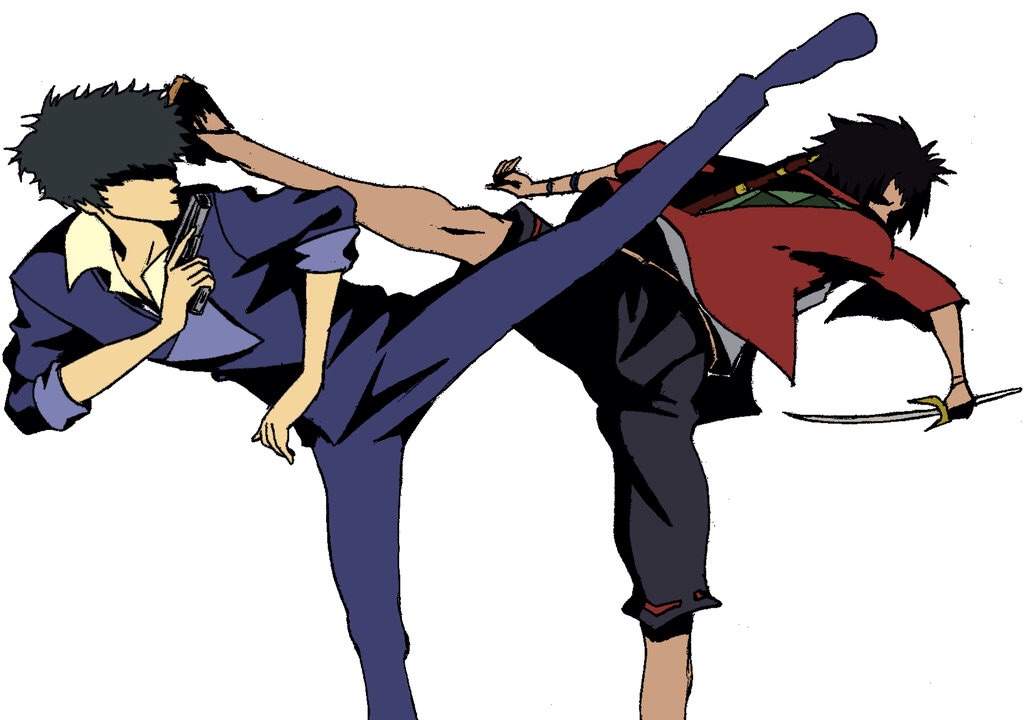Are Cowboy Bebop And Samurai Champloo Similar?

In the realm of anime, two titles often mentioned in the same breath are Cowboy Bebop and Samurai Champloo. Both series have garnered a significant following, leaving a lasting impact on the anime landscape. Despite their different settings—one being a space western and the other a historical samurai tale—these series share numerous similarities that intrigue fans and critics alike. This article explores the parallels and distinctions between these iconic shows.
Quick Info Table
| Feature | Cowboy Bebop | Samurai Champloo |
|---|---|---|
| Setting | Space Western | Edo-period Japan |
| Main Themes | Loneliness, existentialism | Freedom, journey, society clash |
| Director | Shinichirō Watanabe | Shinichirō Watanabe |
| Episode Count | 26 | 26 |
| Music Composer | Yoko Kanno | Nujabes and others |
| Year of Release | 1998 | 2004 |
The Creative Mind of Shinichirō Watanabe
A Visionary Director
Both Cowboy Bebop and Samurai Champloo were directed by Shinichirō Watanabe, a name synonymous with innovation in anime storytelling. Known for his ability to blend diverse genres, Watanabe has a knack for creating atmospheres that are both unique and engaging. His directorial style is evident in the nuanced storytelling and the dynamic character developments in both series.
Genre Fusion
Watanabe's hallmark is his seamless fusion of genres. In Cowboy Bebop, he masterfully combines elements of noir, science fiction, and westerns. Meanwhile, Samurai Champloo fuses historical drama with hip-hop culture. This genre-blending approach not only sets the stage for unique narratives but also attracts a broader audience, transcending typical anime boundaries.
Themes and Narrative Style
Storytelling Techniques
Both series employ episodic storytelling, allowing each episode to stand alone while contributing to a larger narrative arc. This format is particularly effective in exploring diverse themes without losing the overall plot. In Cowboy Bebop, the narrative often delves into existential themes and the loneliness of bounty hunting. Conversely, Samurai Champloo focuses on themes of freedom and societal norms, depicted through the journey of its protagonists across Edo-period Japan.
Exploration of Loneliness and Freedom
The protagonists in both series grapple with loneliness and the quest for freedom. In Cowboy Bebop, Spike Spiegel and his crew navigate the vastness of space, each haunted by their pasts. Similarly, in Samurai Champloo, the trio of Mugen, Jin, and Fuu embark on a journey that explores themes of personal freedom against the backdrop of a rigid society.
Character Dynamics

Diverse and Relatable Characters
Both series feature a diverse cast of characters, each with distinct backgrounds and personalities. Cowboy Bebop's crew comprises individuals with complex histories, contributing to rich character interactions. Similarly, Samurai Champloo's protagonists, with their contrasting personalities—Mugen's wildness, Jin's stoic nature, and Fuu's determination—create a dynamic interplay that drives the story forward.
Character Development
In both series, character development is pivotal. As the episodes progress, viewers witness significant growth and change in the characters. Spike Spiegel's enigmatic past gradually unravels, while Mugen and Jin confront their own demons, leading to personal transformation. This emphasis on character arcs adds depth to the narrative, making the series more engaging and relatable.
Music and Atmosphere
Iconic Soundtracks
Music plays a crucial role in setting the mood and enhancing the storytelling of both series. Cowboy Bebop's soundtrack, composed by Yoko Kanno, is renowned for its eclectic mix of jazz and blues, perfectly complementing the series' noir and western themes. In contrast, Samurai Champloo features a hip-hop-infused soundtrack, with contributions from artists like Nujabes, creating a unique soundscape that enhances its Edo-era yet modern vibe.
Cultural Impact
The music in both series has left a lasting impact on anime and beyond. Cowboy Bebop's jazz influences have been praised for their innovation, while Samurai Champloo's hip-hop elements have introduced many viewers to the genre, highlighting anime's ability to transcend cultural boundaries.
Visual and Artistic Style
Animation Techniques
Visually, both series are distinct yet share a commitment to high-quality animation. Cowboy Bebop's animation captures the vastness of space and the gritty feel of its settings, while Samurai Champloo's art style reflects the vibrant and dynamic nature of Edo-period Japan, punctuated by fluid action sequences.
Artistic Innovation
The artistic direction in both series showcases innovation. Cowboy Bebop's use of color and shadow creates a cinematic experience, while Samurai Champloo's visual style incorporates modern elements into a historical setting, resulting in a unique aesthetic that has inspired many subsequent anime.
Conclusion
Cowboy Bebop and Samurai Champloo, despite their different settings and themes, share many similarities that contribute to their enduring popularity. Directed by the visionary Shinichirō Watanabe, both series offer a masterful blend of genre fusion, compelling character dynamics, and memorable soundtracks. Through their exploration of universal themes like loneliness and freedom, they resonate with audiences worldwide.
In conclusion, while Cowboy Bebop and Samurai Champloo are distinct in their storytelling and artistic approaches, they exemplify the potential of anime to be both entertaining and thought-provoking. By merging diverse genres and exploring complex themes, these series continue to captivate new generations of viewers. As you delve into these iconic works, reflect on the journeys of their characters and the rich tapestries of music and art that define them. Whether you're a seasoned anime fan or a newcomer, these series promise an unforgettable experience that transcends time and space.



Comments ()